It’s odd, the stuff you just make up in your head about a TV programme, without any actual evidence. Even a programme you’re supposed to know plenty about.
Take Series III of Red Dwarf. Out goes Paul Montague as Production Designer, and in comes Mel Bibby. The look of the show changes almost completely, the grey submarine aesthetic replaced by cream, Alien-inspired sets. At first glance, the show could barely look much different.
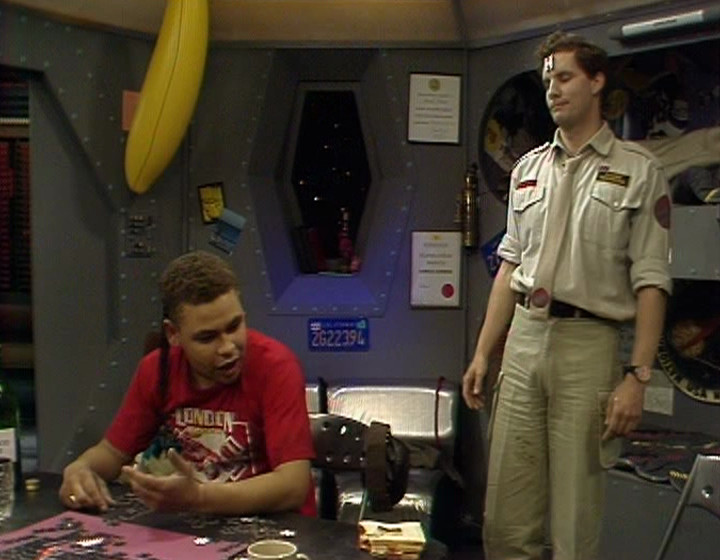
Series 2 bunkroom
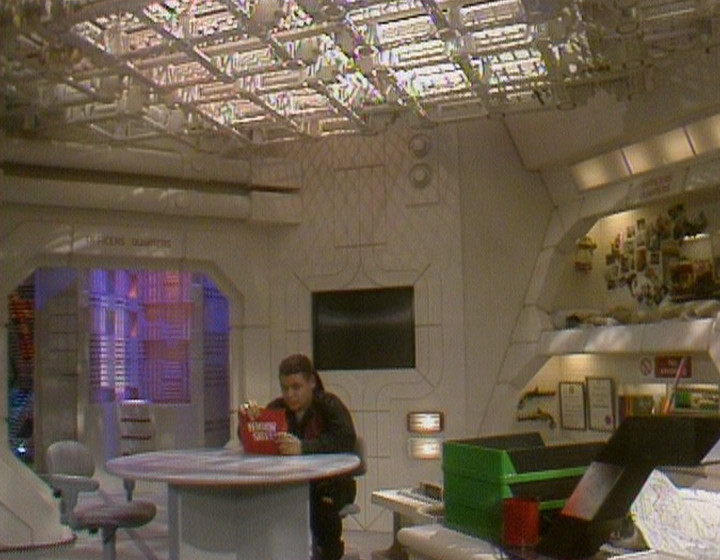
Series III bunkroom
And so, over the years, your mind runs away with itself. You imagine Mel Bibby getting a massive skip, chucking every single last shred of the old sets into it, and starting from scratch. After all, not only do the sets look entirely different, but it’s on record that the show’s new producers – a certain Rob Grant and Doug Naylor – hated the old sets.
Nobody’s ever actually said that no part of the old sets remained in the new look. But clearly they didn’t, right? The new regime would want nothing to do with them.
* * *
Let’s take a little trip back to 1987. Specifically, to the recording of Series 1’s “Future Echoes” (RX: 17-18/10/87). That’s an interesting panel behind Lister there, in the corridor set. Hello.
Give that a good stare. We’ll be seeing a lot of it. (You can click/tap on all the pictures in this article for a bigger version, and you’ll probably need to do so for some of the more obscure instances.)
Let’s skip to next week, and the recording of “Confidence & Paranoia” (RX: 24-25/10/87). What’s that we can see in the Medical Unit?1
That is most definitely the same panel.
Finally, let’s go to the reshoots for the first episode broadcast, “The End” (RX: 7-8/11/87).2 What’s that which has suddenly sprung up in one of the other corridors?
That was the final recording session for Series 1. At this point, it would have all been packed neatly away into storage for next year’s series. I bet a rat did a piss on it.
Come Series 2, and where does our panel end up? In “Thanks for the Memory” (RX: 4-5/6/88), it’s magically leapt across from Red Dwarf, to the brand new Blue Midget set:
This is where it stays for “Kryten” (RX: 18-19/6/88) a couple of weeks later.
And that’s your lot for Series 2. And this is where we would expect the brief story of this tiny piece of set to end. Come Series III, surely it’s been got rid of?
The first episode of Series III to be recorded was “Marooned” (RX: 4-5/9/89). And… hang on, what’s that in the Starbug mid-section set? Just where Rimmer’s head is in the first picture?
It’s been altered a little – the circuitry in the middle seems to have been torn out – but the rest of it is unmistakably the same. Buttons on the left, curved pipe, and all.
Come Series IV, and the show moves from Manchester to Shepperton. Did our panel make the trip down south like the rest of the mid-section set? “Meltdown” (RX: 28-29/11/90) and “Camille” (RX: 5-6/12/90) gives us our answer:
Unsurprisingly, it stays there for Series V. In “The Inquisitor” (RX: 7-8/11/91) and “Terrorform” (RX: 21-22/11/91) we get some particularly clear shots of it.
But surely it can’t stay for Series VI, right? The mid-section set was expanded and redesigned for that series, once it was decided to set the show entirely on Starbug. A grotty bit of set originating from Series 1 would be the first thing to be chucked, right?
Let’s take a look at “Out of Time” (RX: 25+27/3/93). No clues. Can you spot it?
For the majority of Series VI, the panel is hidden behind the brand new metal shelving which has sprung up in the mid-section. But it’s definitely there. In the first picture, look to the left of Rimmer’s head; in the second, look to the right.
We then have a break of three years, while everyone dealt with their various dramas. When Red Dwarf returned, the show was shot entirely without an audience, and the Starbug interior set had changed yet again. After all those years, was that bit of Series 1 set still hanging around?
Take a look at “Tikka to Ride” and “Beyond a Joke” (RX: May-June 1996)3. Specifically, at the top of these pictures.
Again, your curved pipe is the biggest clue. That same bit of set is still there, all those years later. Which is faintly incredible.
Surely we can’t trace it through to Series VIII? After all, in the opening episode, Starbug was destroyed, and we never see the mid-section set. Was it cannibalised and used elsewhere in the series?
As far as I can tell… no. Series VIII was the end of the road for this particular bit of set. Somewhere between June 1996 and September 1998, it goes missing. Almost certainly chucked away for good. Ah well, it had a good run.4
* * *
But our story doesn’t stop there. That panel, you see… it had a sister.
Let’s go right back to Series 1. Specifically, to “Balance of Power” (RX: 3-4/10/87), and the corridor where Rimmer and Cat have one of their trademark awkward conversations.5
Hi, you. This looks fairly similar in design to the other panel; it’s clearly the same dimensions, and has a similar vent-style thing at the bottom. The biggest difference is that green analogue meter. Again, have a jolly good stare at it. Tracing this one can get slightly tricky.
Not initially, mind. Unlike its sistren, this particular panel doesn’t go flitting all around the ship. For the rest of Series 1, it stays in exactly the same place, in the same corridor:
Note that after “Balance of Power”, the panel gains a cover. It’s definitely the same panel though, and here’s how we can tell: you can occasionally see the green analogue meter shining out from underneath. This is particularly obvious in the first picture above.
For Series 2, the panel remains in the same corridor, but – like the rest of the Series 2 sets – gains a little colour. By far the best place to have a look at it in this state is “Kryten” (RX: 18-19/6/88), particularly during the eponymous droid’s cleaning montage.
Note that the panel is actually on upside down compared to “Balance of Power”. I presume Kryten took it off to clean it, and put it back in a hurry.6
And now, we come to one of those bizarre leaps of faith that this kind of research occasionally inspires. It’s time for Series III. I already knew by this point that the other panel had made its way to the Starbug mid-section set. My brain suddenly sparked into life. If this panel made it across to III, wouldn’t it make sense for it to be in the Starbug set as well? Perhaps directly underneath the other one, as the dimensions would be identical?
I loaded up “Marooned” (RX: 4-5/9/89), and I squinted. Hard. You might need to click/tap to enlarge the images for this one.
Look at the bottom of that first picture there, just to the right of Rimmer. That’s the green analogue meter from the second panel. And if you look just to the left of Lister’s knee in the second picture, there it is again – slightly harder to spot, but definitely there.
And once it’s locked into the Starbug set, unsurprisingly, it makes it across to Series IV a year later. “Justice” (RX: 14-15/11/90) and “Camille” (5-6/12/90) both give a better view of it than anywhere in Series III:
That first shot from “Justice” is a beautiful piece of serendipity that happens incredibly rarely in this kind of research: the pyrotechnic lights up exactly the right part of the set, and proves beyond a shadow of a doubt that this is exactly the same panel we first saw back in “Balance of Power”.
You know the drill by now. The panel stays in the same place for Series V, with “Demons & Angels” (RX: 31/10/91 – 1/11/91) and “Quarantine” (28-29/11/91) giving the best examples.
Again, Series VI proves a little bit of a challenge, as the metal shelving obscures the panel for much of the series. But we can see it in “Psirens” (18+20/2/93) and “Emohawk – Polymorph II” (18+20/3/93), the “Psirens” shot giving us an especially good view.
And so we reach Series VII. I have to admit, for a while, I was stumped. That metal shelf kept getting in the way. I knew damn well that the panel was probably there, but I couldn’t prove it. The shot I needed remained elusive.
Until, suddenly… “Beyond a Joke” (RX: May-June 1996) served its purpose.
It’s not 100% immediately obvious, but if you trace a line downwards from our by-now-famous curved pipe panel, and stop around the top of Kochanski’s leg: that’s the second panel. The tell-tale sign is that analogue meter, the circle shining out into the darkness. For the first and only time in this article, I’ll give you a helping hand:
Sadly, this panel also goes missing for Series VIII. Oh well, you can’t have everything.
* * *
I fully acknowledge that while there are some people who find this kind of thing fascinating, there will be a few people who will be considering if I need some form of psychiatric help. I am assuming that if you’ve got this far down into this ridiculous article, you belong to the former group. Hello there. I like you.
I am fascinated by it for a reason, though: because it tears down a huge assumption about the show. For years, the vast majority of Red Dwarf fandom had no idea that there were bits of those early sets embedded in the later series. We just took the usual story about Mel Bibby revamping the look of the show at face value, and filled in the gaps. Filled them in wrong.
There is one final part of this little tale, though. I admit it: I deliberately left out one important detail in the above story of the second panel, with the green analogue meter. Because while it first shows up properly on-screen in “Balance of Power”, we do actually have some earlier footage of it.
As mentioned earlier in this article, the very first episode of Red Dwarf, “The End”, had extensive reshoots. And one of those reshoots was the very first scene of the show. Quietly sitting in the deleted scenes bonus material on the Series 1 DVD, released in 2002, is the original, unbroadcast version of this opening scene (RX: 27/9/87).
And in this original version of the opening scene, Rimmer is fiddling with… well, take a look for yourself.
That panel with the green analogue meter was the original circuit that Rimmer and Lister were working on. And it’s in the very first scene ever shot in front of an audience for Red Dwarf. In the context of the mythology of the show, it’s hugely significant, even if it eventually went unbroadcast.
And there it was, quietly sitting there, not making a fuss, at the bottom of the Starbug mid-section for years. When pretty much everybody who cared about such things thought that anything from early Red Dwarf had long since been got rid of.
It blows my mind, just a little.
Actually, the Captain’s Office set redressed. But that’s a whole other article. ↩
See this article for more details of the reshoots which took place for this episode. ↩
Sadly, more accurate recording dates for Series VII aren’t readily available. ↩
I know what some of you are thinking. Between Series VII and VIII there was Red Dwarf Night… and a certain show called Can’t Smeg Won’t Smeg. This thoroughly ridiculous Dwarf-themed episode of Can’t Cook Won’t Cook was shot at the end of 1997 at Teddington Studios, on an adapted version of the Starbug mid-section set. Does our panel prop show up in that?
Dear reader, I have squinted at it for ages… and I don’t think it does. Which is a shame, as it would have delighted me intensely for that of all shows to be the final on-screen appearance of this bit of set. I’d love you to prove me wrong. ↩
Which are clearly one of the best things about Series 1. ↩
I don’t presume this at all, Kryten is a fictional character. ↩

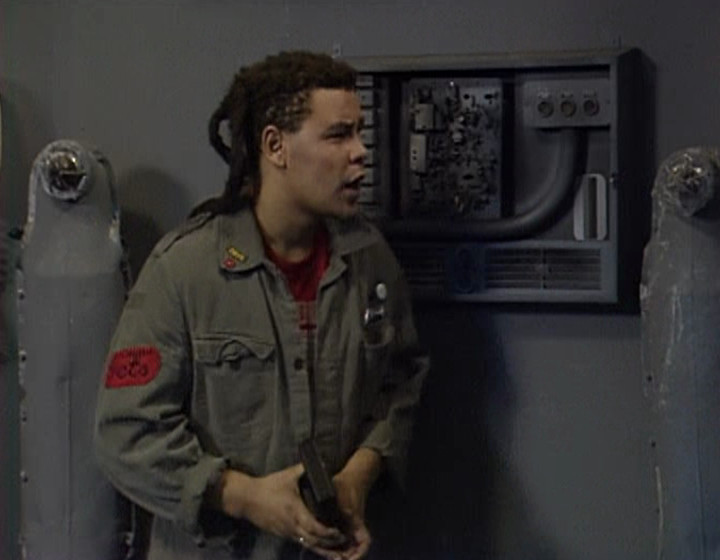

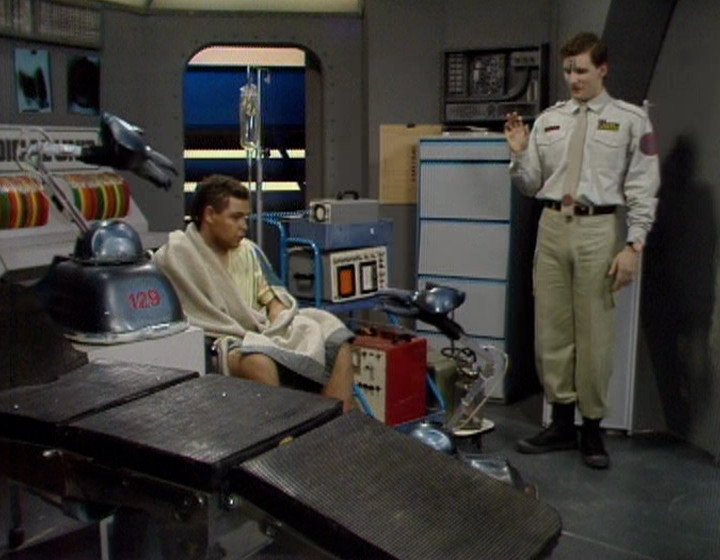
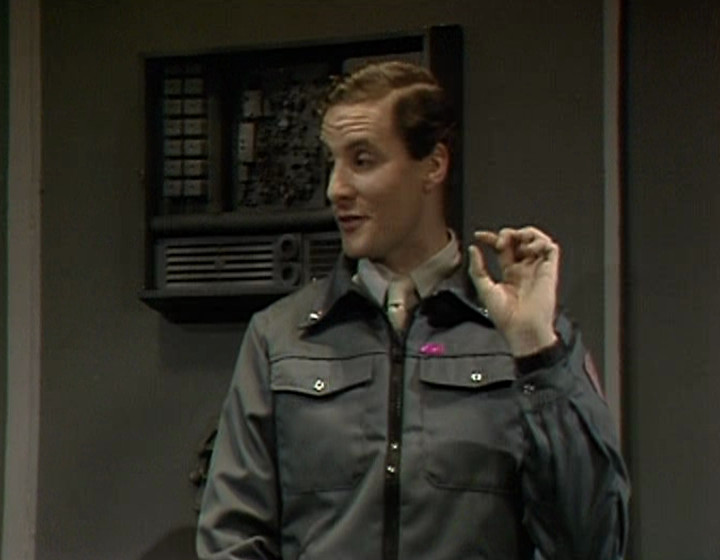

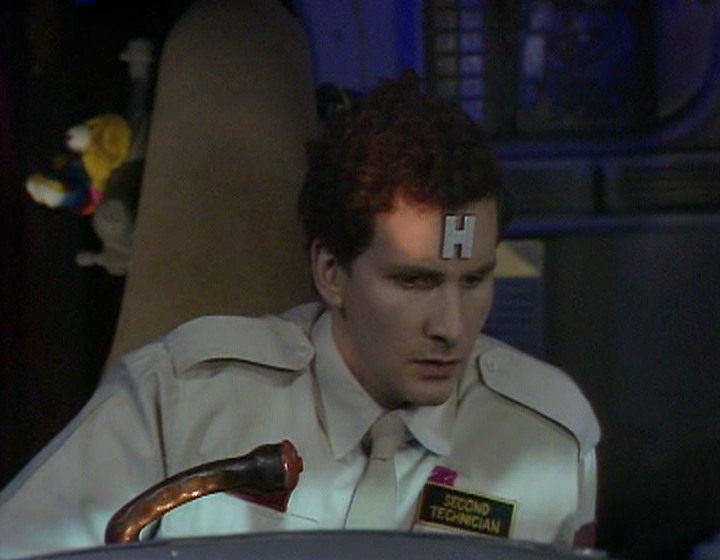
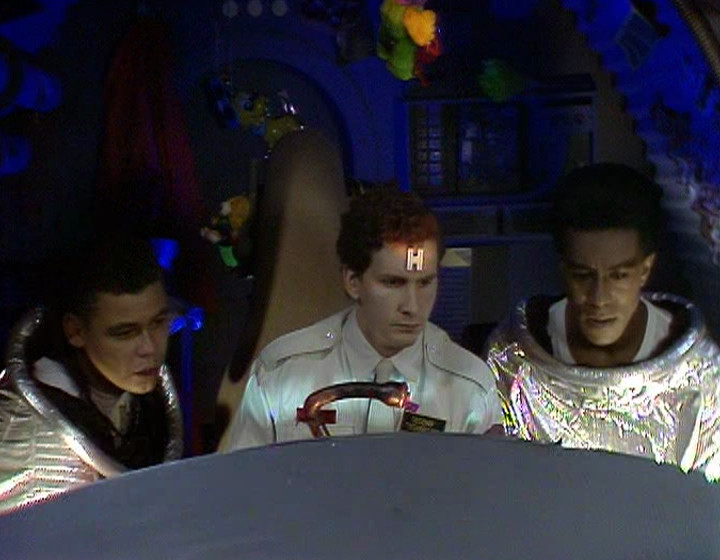

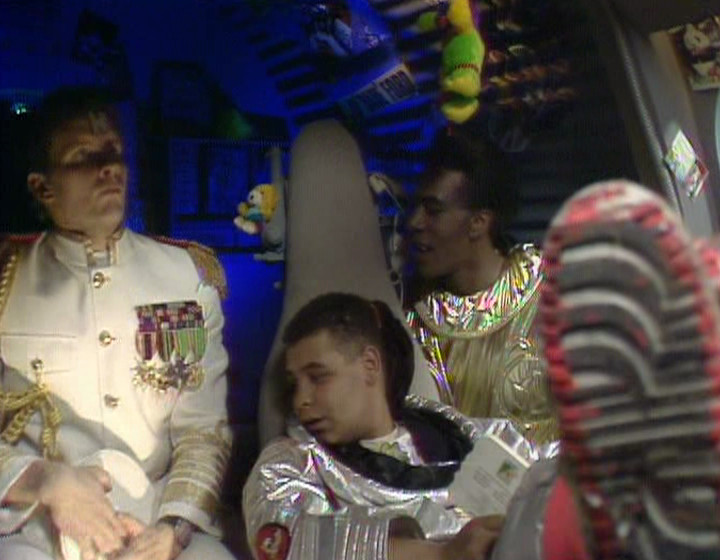
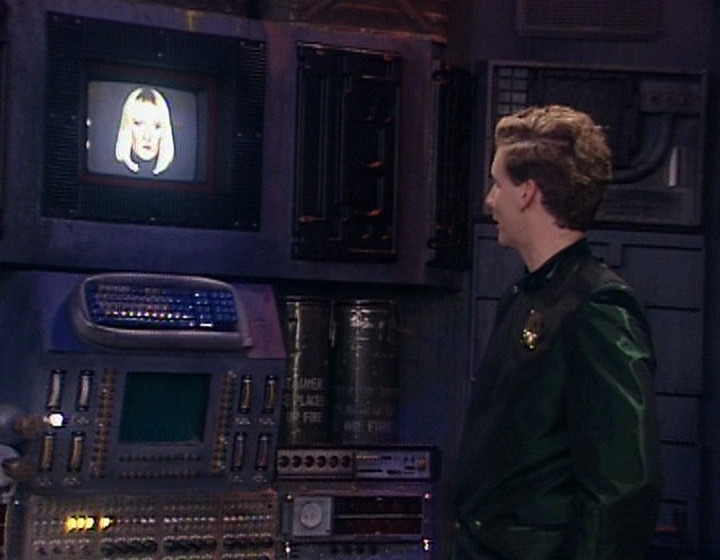

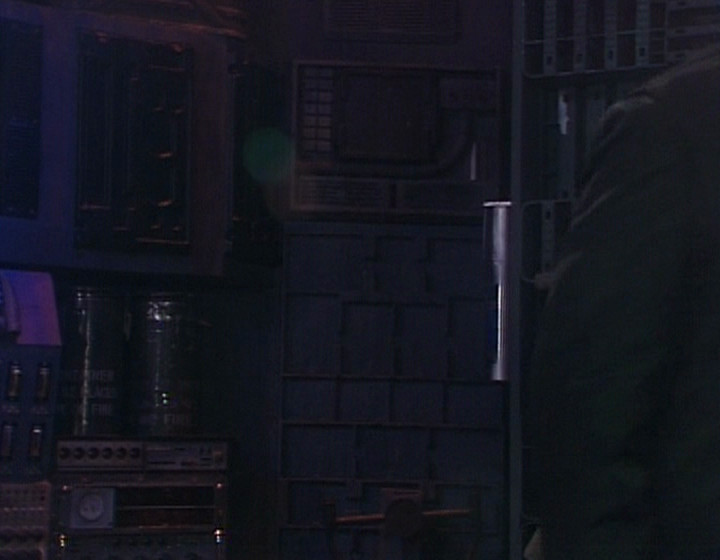
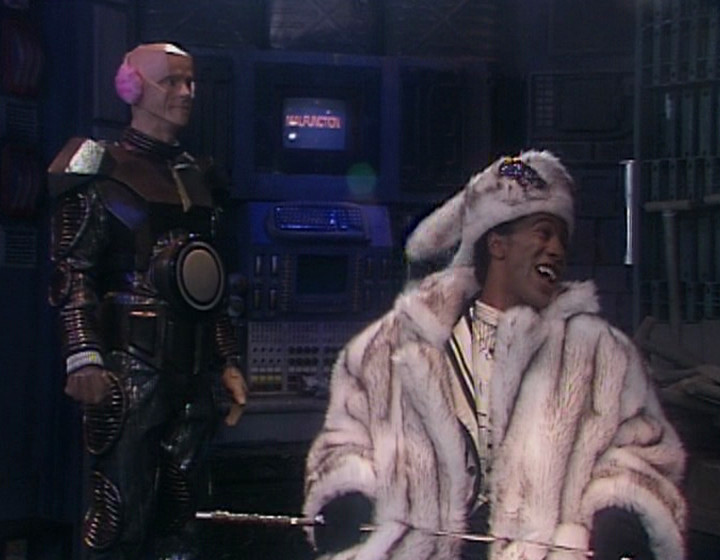
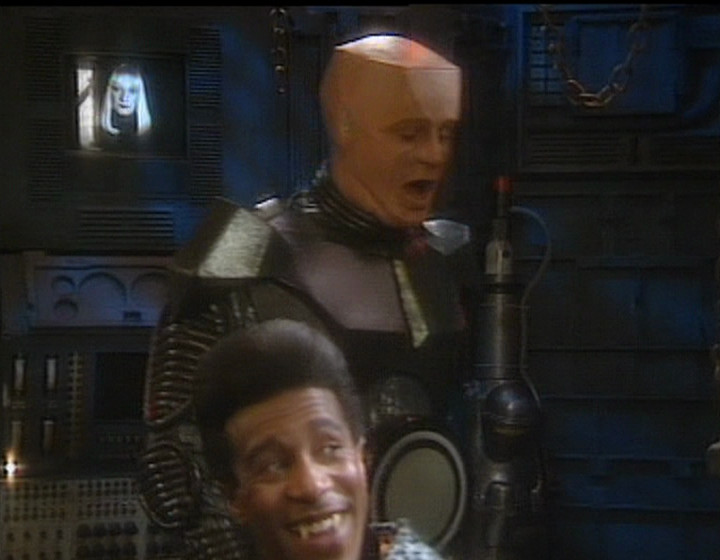


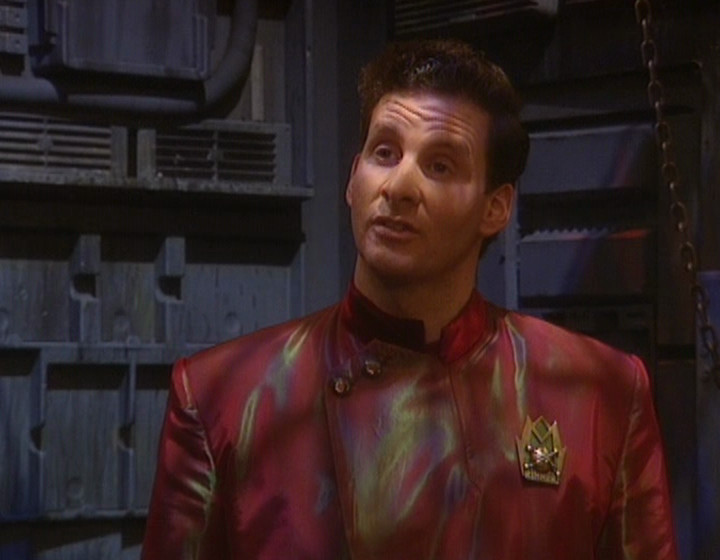
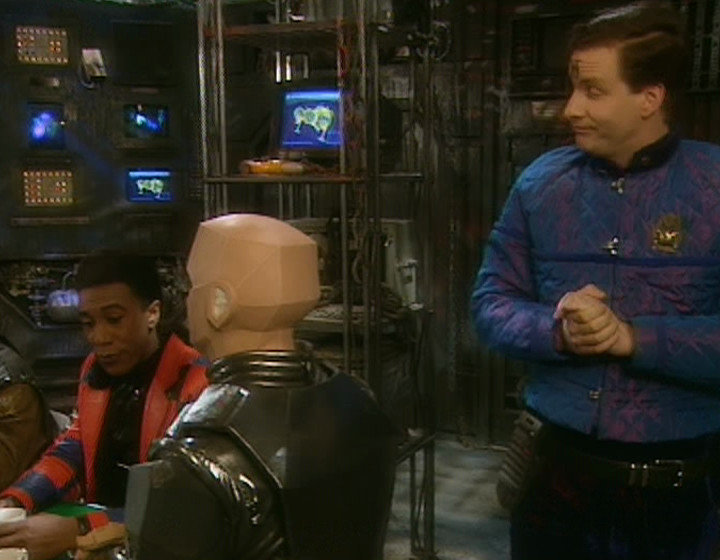


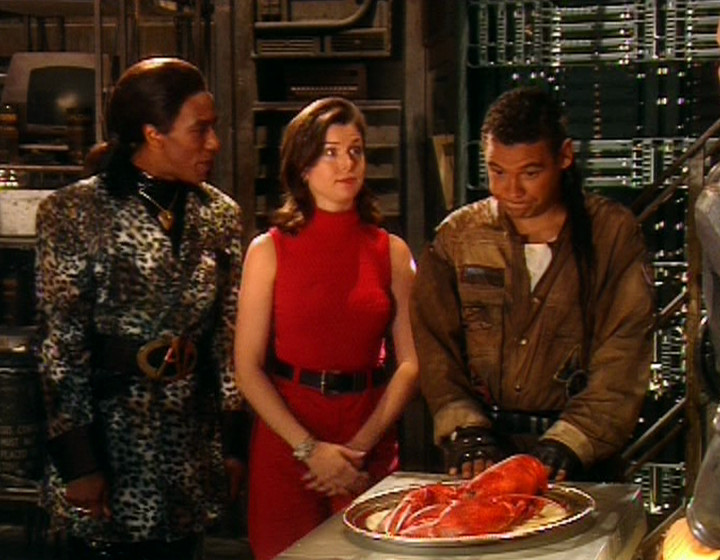

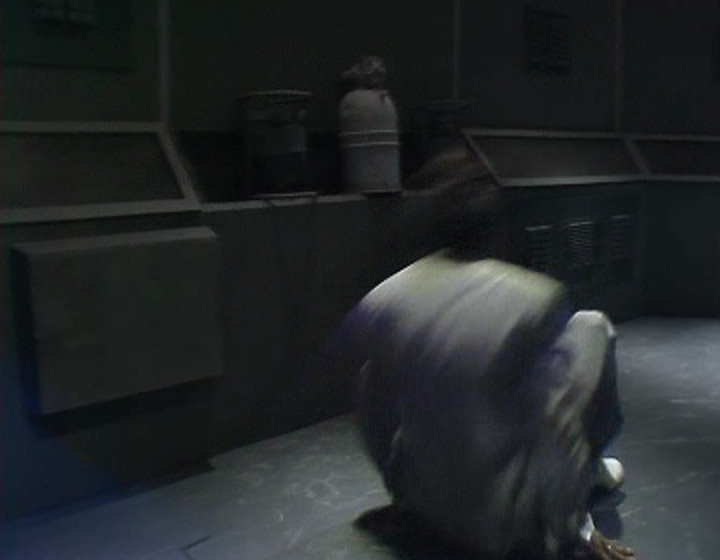

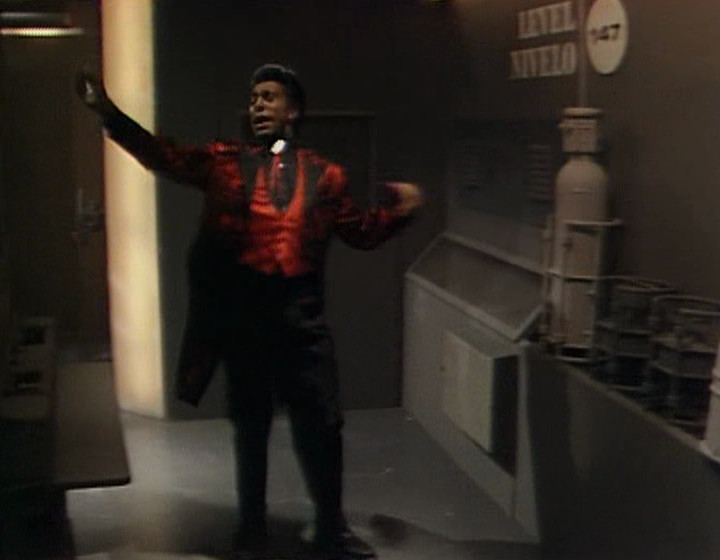
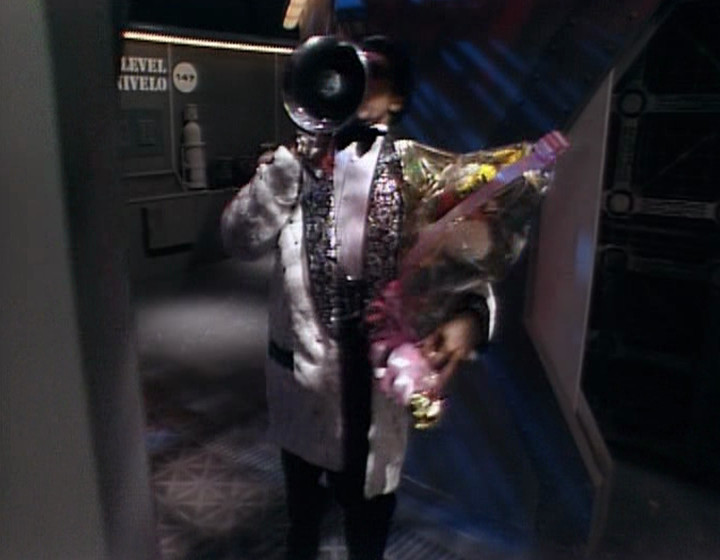

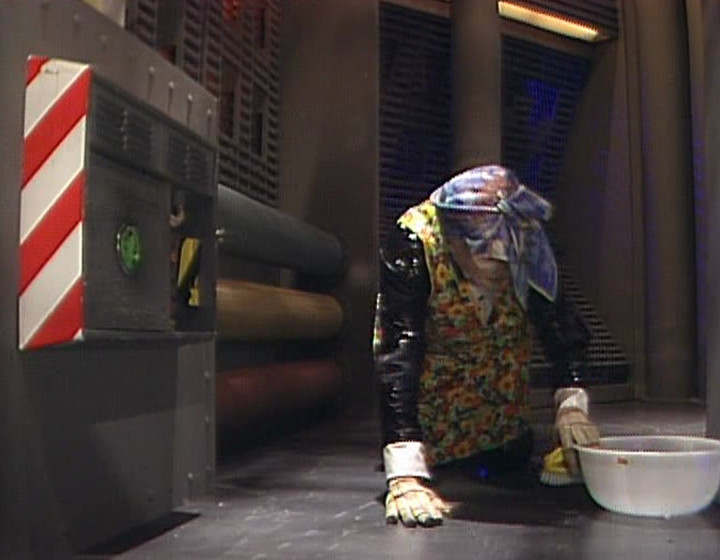


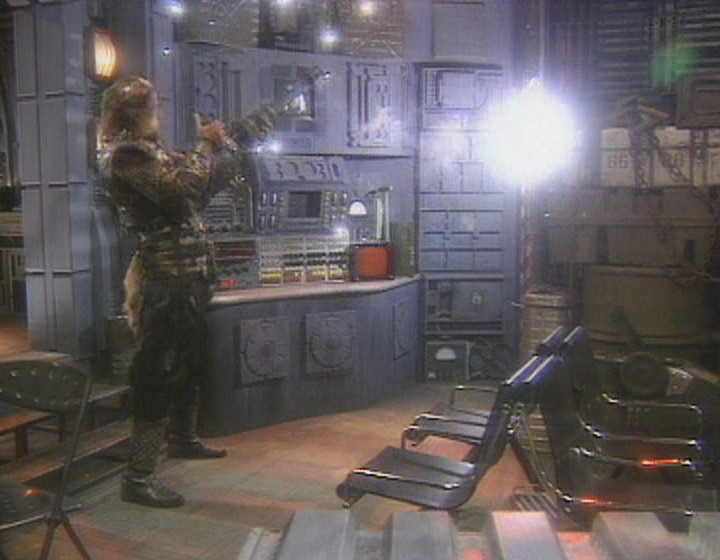
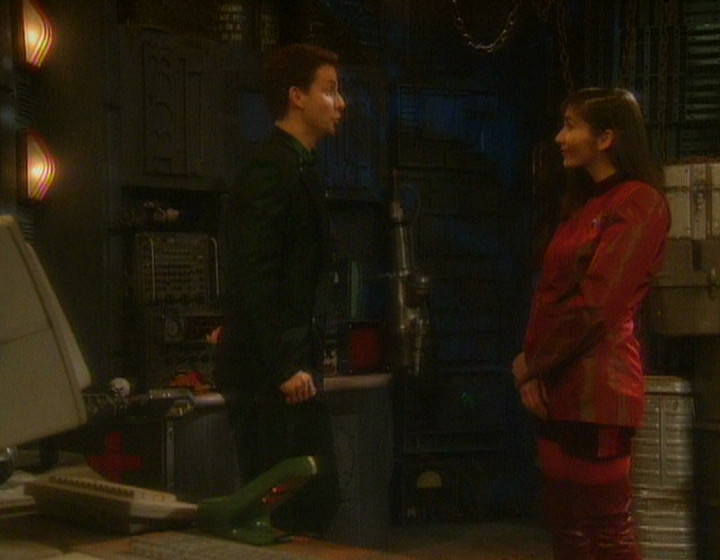

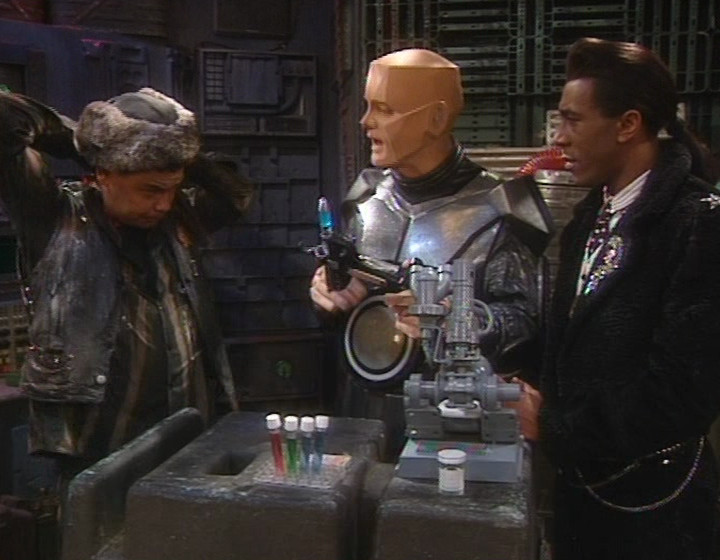
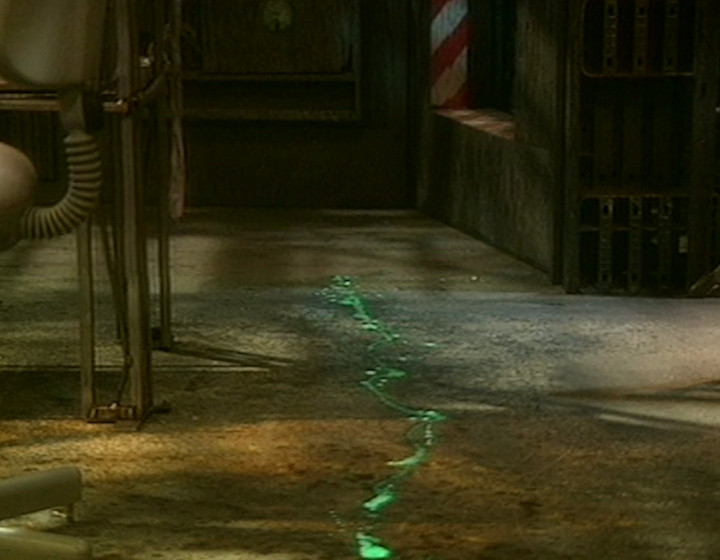
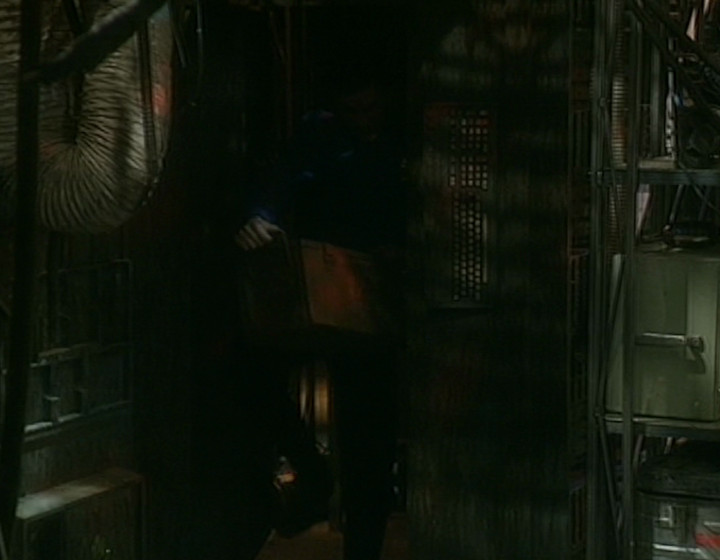

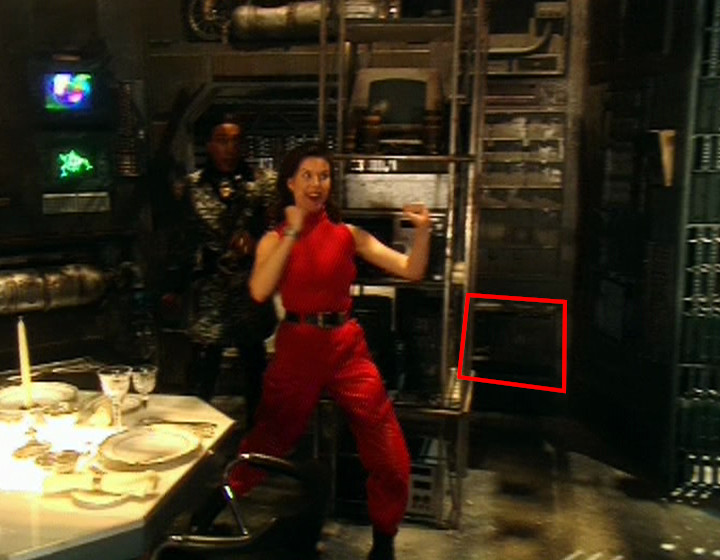
4 comments
Zoomy on 25 November 2021 @ 7am
Speaking as one of the strange people who finds this kind of thing really fascinating – thanks!
peepingsignal on 25 November 2021 @ 8am
Lovely stuff, John. It’s my headcanon that these panels had been around for decades prior and have popped up on a myriad of shows before and since RD; a sort of journeymen pair, or perhaps Bobo the Teddy Bear from the Simpsons.
John Reith forged these in a Blacksmith’s shop and hand-delivered them to the Props Department in 1936, and you can’t prove otherwise.
Rob Keeley on 25 November 2021 @ 5pm
I’m pretty sure the first panel, at least, had a life before Red Dwarf, I’m sure I’ve seen it in Doctor Who.
It’s also just struck me that the character of Vinder in the latest series of Doctor Who is pretty much Lister without the comedy.
James on 26 November 2021 @ 10pm
Excellent work, John. Thank you.
Comments on this post are now closed.